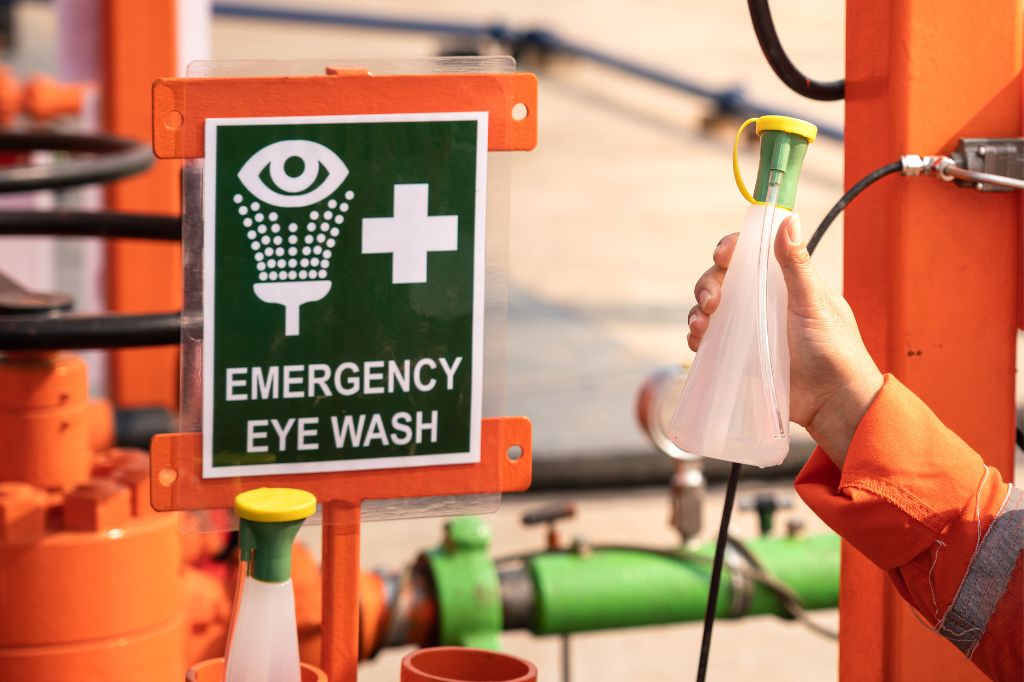 It probably won’t come as a surprise to anyone, but accidents happen in the workplace. The best we can do is take precautionary measures to protect employees and guests from hazards. At least that’s what most people do. Then you have companies like the one in the photo where they block the first aid station with tires and wheels; simultaneously rendering the eyewash station useless.
It probably won’t come as a surprise to anyone, but accidents happen in the workplace. The best we can do is take precautionary measures to protect employees and guests from hazards. At least that’s what most people do. Then you have companies like the one in the photo where they block the first aid station with tires and wheels; simultaneously rendering the eyewash station useless.
When exposed to hazardous substances, the first 10 to 15 seconds are critical. Delaying treatment, even for just a few moments, may result in serious injury.
Emergency showers and eyewash stations provide on-the-spot decontamination. They allow workers to flush away hazardous substances to prevent further harm.
Even when personal protective equipment (PPE) is used with other safety precautions and engineering control, accidental exposures can still occur. As a result, it’s imperative to keep the eyewash and first aid kit clear of obstructions. When an Emergency Eye Wash Sign features text reminding you to keep the area clear, it’s for the employees benefit. Reaching an emergency shower or eyewash station is necessary to minimizing the effects of accidental chemical exposure.
Moreover, emergency showers can also be used effectively in extinguishing clothing fires or for flushing contaminants off clothing. When you can’t reach the station, your chances for severe injury multiply.
As the Occupational Safety and Health Administration (OSHA) points out, these stations and first aid kits “need to be stored in a convenient area available for emergency access.” As we can see in the photo, there’s nothing convenient about removing or climbing over tires to reach a station that is filled with old oil bottles.
Before an emergency occurs, make sure you’re prepared. It could be the difference between leaving work injury free and leaving in an ambulance.
Source:
https://www.osha.gov/laws-regs/standardinterpretations/2007-01-23

